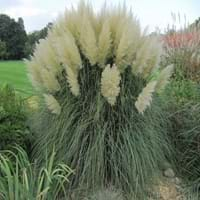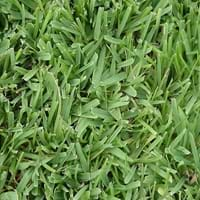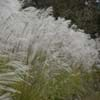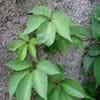About Plume Grass and Seashore Paspalum
Life Span
Perennial
Perennial
Origin
Mediterranean, Northern Africa
World/Pandemic
Types
Not Available
Not Available
Habitat
marshes, Riverbanks
Subtropical climates, Tropical regions
USDA Hardiness Zone
6-9
8-10
AHS Heat Zone
9 - 6
Not Available
Sunset Zone
Not Available
H2, 17, 24
Habit
Upright/Erect
Mat-forming
Minimum Width
Not Available
Flower Color
Purple, Silver
Green, White
Flower Color Modifier
Bicolor
Bicolor
Fruit Color
Purple
Non Fruiting Plant
Leaf Color in Spring
White, Gray Green
Green
Leaf Color in Summer
Light Green
Light Green
Leaf Color in Fall
Purple, Tan
Green
Leaf Color in Winter
Purple, Tan
Green
Leaf Shape
Grass like
Lance shaped
Plant Season
Summer, Fall, Winter
Spring, Summer, Fall, Winter
Sunlight
Full Sun
Full Sun, Partial Sun
Growth Rate
Medium
Medium
Type of Soil
Loam
Clay, Loam, Sand
The pH of Soil
Acidic, Neutral
Neutral, Alkaline
Soil Drainage
Well drained
Average
Bloom Time
Late Summer, Fall
Spring, Late Spring, Early Summer, Summer, Late Summer
Tolerances
Drought
Pollution, Salt, Soil Compaction
Where to Plant?
Ground
Ground
How to Plant?
Seedlings, Vegetative
Sprigging or Stolonizing
Plant Maintenance
Medium
Medium
Watering Requirements
Water once every two or three weeks
Needs more water during establishment
In Summer
Lots of watering
Lots of watering
In Spring
Moderate
Moderate
In Winter
Average Water
Average Water
Soil pH
Acidic, Neutral
Neutral, Alkaline
Soil Type
Loam
Clay, Loam, Sand
Soil Drainage Capacity
Well drained
Average
Sun Exposure
Full Sun
Full Sun, Partial Sun
Pruning
Cut back all stems to the same height
Remove damaged leaves, Remove dead branches, Remove dead leaves
Fertilizers
0-10-10 NPK fertilizer
organic fertlizers
Pests and Diseases
Drought, Edema
Dollar spot, Leaf spot
Plant Tolerance
Drought
Drought
Flowers
Showy
Insignificant
Flower Petal Number
Single
Single
Foliage Texture
Fine
Fine
Foliage Sheen
Matte
Matte
Invasive
Sometimes
Sometimes
Attracts
Birds
Billbugs, Crickets, Cutworms
Allergy
Noxious Weed
Not Available
Aesthetic Uses
Borders, Showy Purposes
Ground Cover
Beauty Benefits
Not Available
Not Available
Environmental Uses
Erosion control
Erosion control
Medicinal Uses
Not Available
No Medicinal Use
Part of Plant Used
Leaves
Not Available
Other Uses
Cultivated for fodder
Used as a golf course turf, Used to feed livestock
Used As Indoor Plant
No
No
Used As Outdoor Plant
Yes
Yes
Garden Design
Cutflower, Dried Flower/Everlasting, Feature Plant, Mixed Border
Lawns and Turf
Botanical Name
SACCHARUM ravennae
PASPALUM vaginatum
Common Name
Hardy Pampas Grass, Plume Grass, Ravennagrass
Biscuit Grass, Seashore Paspalum
In Hindi
Plume Grass
Seashore Paspalum
In German
Plume Gras
Seashore Paspalum
In French
Plume Herbe
Seashore Paspalum
In Spanish
Penacho de hierba
Paspalum
In Greek
Plume Grass
Αιγιαλός Paspalum
In Portuguese
Plume grama
seashore Paspalum
In Polish
Pióropusz Trawa
Nad morzem Paspalum
In Latin
Kessinger Grass
Paspalum maris
Phylum
Magnoliophyta
Magnoliophyta
Class
Lilopsida
Lilopsida
Order
Cyperales
Cyperales
Clade
Angiosperms, Commelinids, Monocots
Angiosperms, Commelinids, Monocots
Tribe
Andropogoneae
Paniceae
Subfamily
Panicoideae
Panicoideae
Number of Species
Not Available
Not Available
Properties of Plume Grass and Seashore Paspalum
Wondering what are the properties of Plume Grass and Seashore Paspalum? We provide you with everything About Plume Grass and Seashore Paspalum. Plume Grass doesn't have thorns and Seashore Paspalum doesn't have thorns. Also Plume Grass does not have fragrant flowers. Plume Grass has allergic reactions like Noxious Weed and Seashore Paspalum has allergic reactions like Noxious Weed. Compare all the properties and characteristics of these two plants. Find out which of these plant can be used as indoor plant. If you are interested to decorate your house and garden, find out aesthetic uses, compare them and select the plant which will beautify your surrounding. Along with beautification, try comparing medicinal and edible uses of Plume Grass and Seashore Paspalum and you can choose the plant having best and most benefits.
Season and Care of Plume Grass and Seashore Paspalum
Season and care of Plume Grass and Seashore Paspalum is important to know. While considering everything about Plume Grass and Seashore Paspalum Care, growing season is an essential factor. Plume Grass season is Summer, Fall and Winter and Seashore Paspalum season is Summer, Fall and Winter. The type of soil for Plume Grass is Loam and for Seashore Paspalum is Clay, Loam, Sand while the PH of soil for Plume Grass is Acidic, Neutral and for Seashore Paspalum is Neutral, Alkaline.
Plume Grass and Seashore Paspalum Physical Information
Plume Grass and Seashore Paspalum physical information is very important for comparison. Plume Grass height is 240.00 cm and width 120.00 cm whereas Seashore Paspalum height is 2.50 cm and width Not Available. The color specification of Plume Grass and Seashore Paspalum are as follows:
Plume Grass flower color: Purple and Silver
Plume Grass leaf color: White and Gray Green
Seashore Paspalum flower color: Green and White
- Seashore Paspalum leaf color: Green
Care of Plume Grass and Seashore Paspalum
Care of Plume Grass and Seashore Paspalum include pruning, fertilizers, watering etc. Plume Grass pruning is done Cut back all stems to the same height and Seashore Paspalum pruning is done Remove damaged leaves, Remove dead branches and Remove dead leaves. In summer Plume Grass needs Lots of watering and in winter, it needs Average Water. Whereas, in summer Seashore Paspalum needs Lots of watering and in winter, it needs Average Water.





